Appendix II: Data

States, by Date of Entry into the Union


Territorial Growth of the United States and Its Colonies from 1790 to 1960
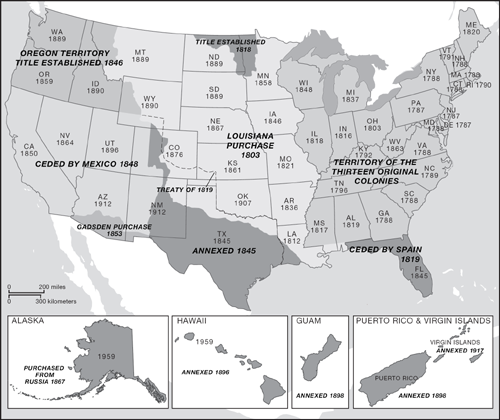

Population of the United States, 1790–2000

Information compiled from the U.S. Census Bureau. As of May 2009, the U.S. Census Bureau projection for 2010 was 310,233,000.

Presidential Elections
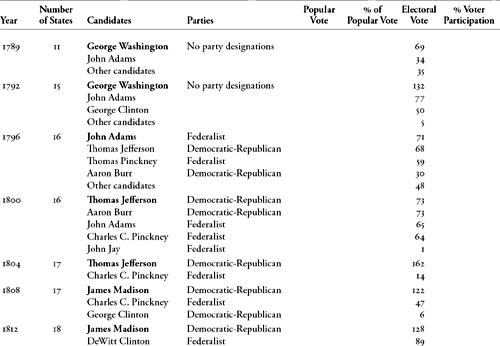
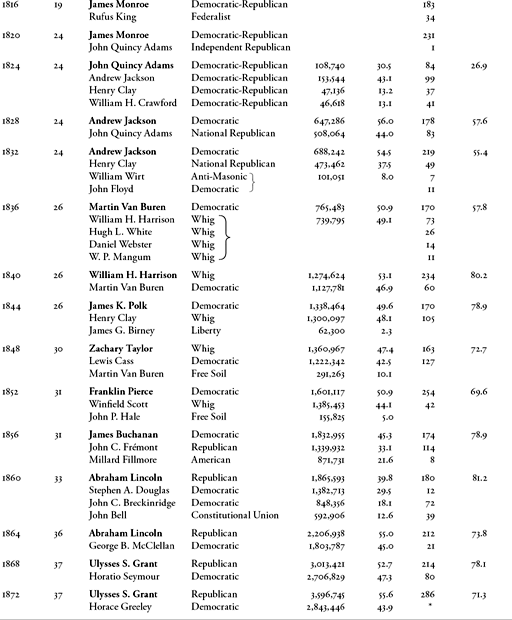

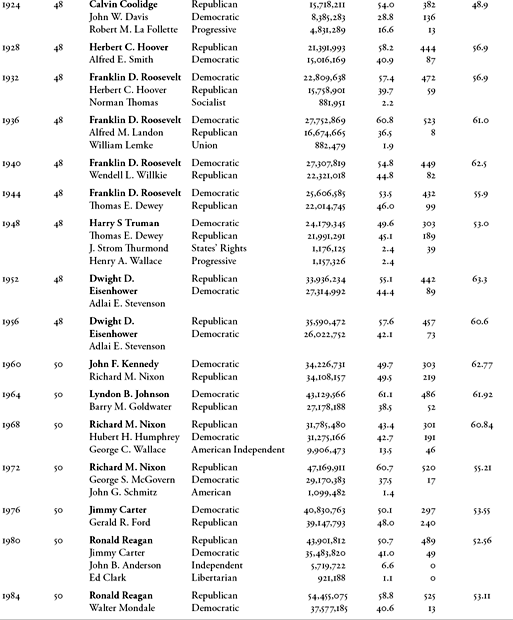

Candidates receiving less than 1 percent of the popular vote have been omitted. Thus the percentage of popular vote given for any election year may not total 100 percent.
Before the passage of the Twelfth Amendment in 1804, the Electoral College voted for two presidential candidates; the runner-up became vice president.
Before 1824, most presidential electors were chosen by state legislatures, not by popular vote.
*Greeley died shortly after the election; the electors supporting him then divided their votes among minor candidates.

Presidents, Vice Presidents, and Cabinet Members

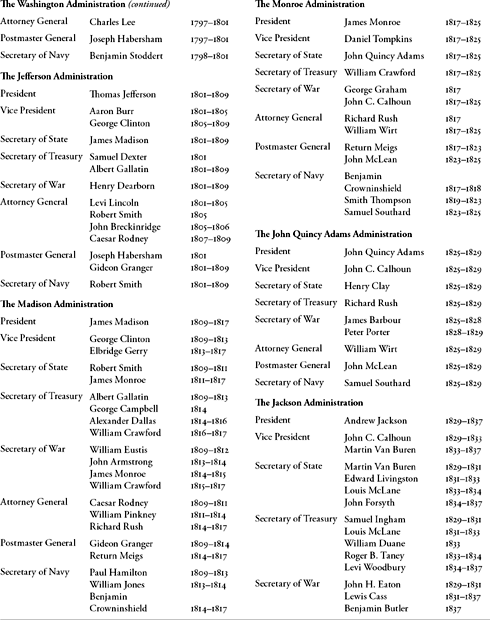



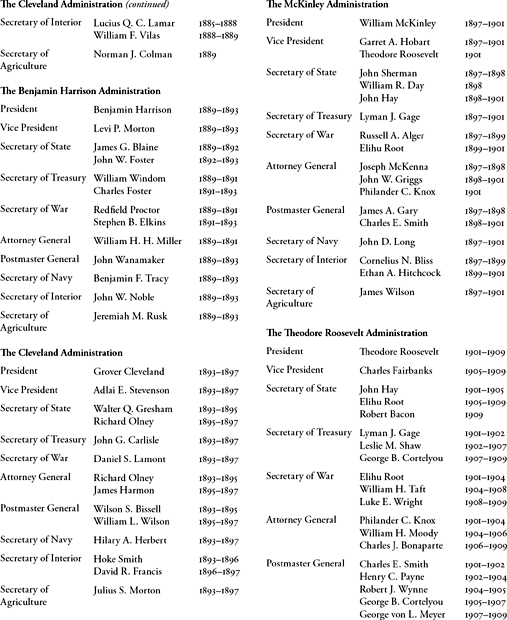
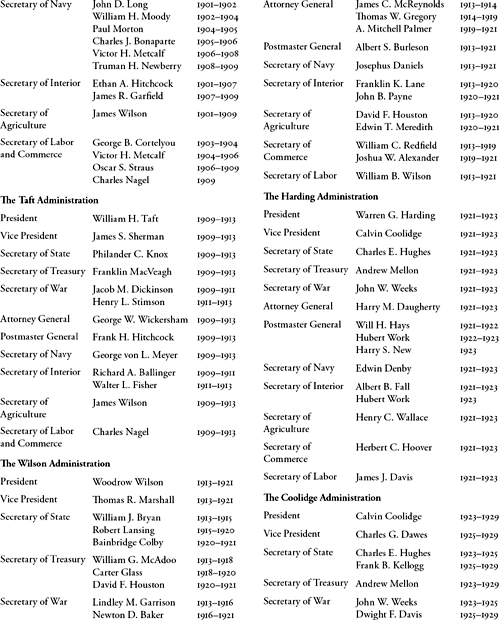

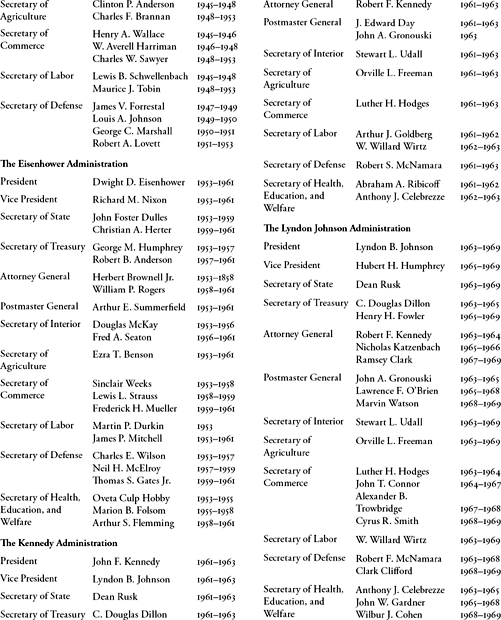
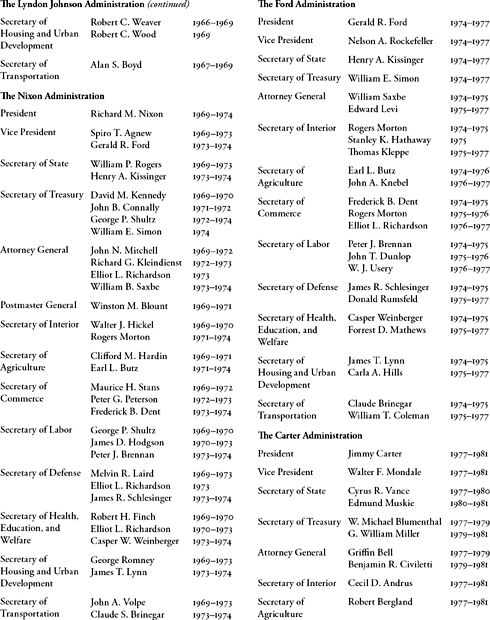
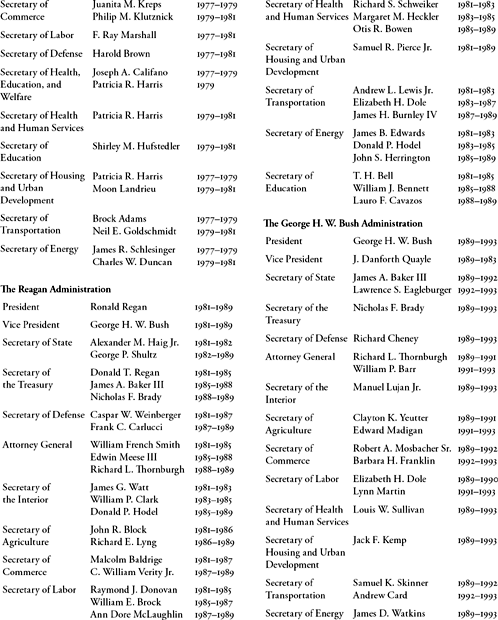

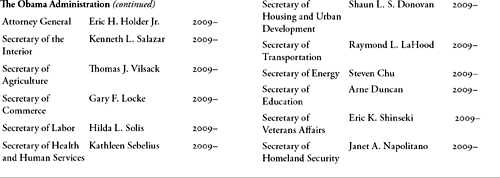

Members of the Supreme Court of the United States

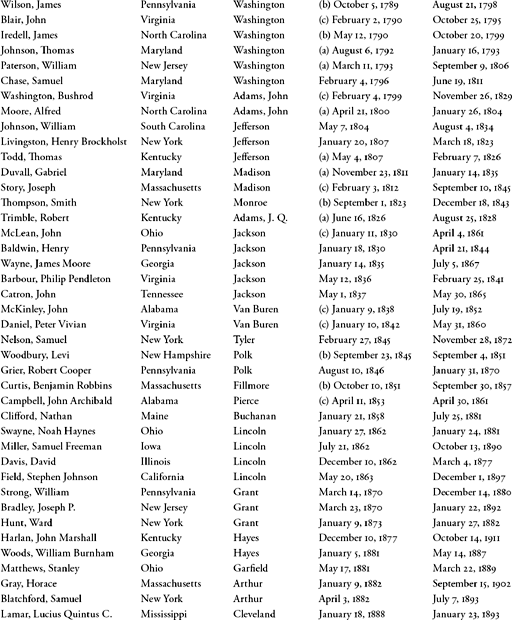
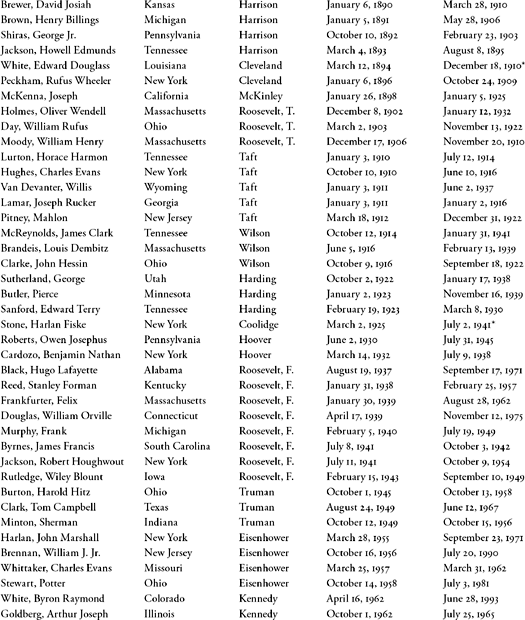

Notes: The acceptance of the appointment and commission by the appointee, as evidenced by the taking of the prescribed oaths, is here implied; otherwise the individual is not carried on this list of the Members of the Court. Examples: Robert Hanson Harrison is not carried, as a letter from President Washington of February 9, 1790, states Harrison declined to serve. Neither is Edwin M. Stanton who died before he could take the necessary steps toward becoming a Member of the Court. Chief Justice Rutledge is included because he took his oaths, presided over the August Term of 1795, and his name appears on two opinions of the Court for that Term.
The date a Member of the Court took his/her Judicial oath (the Judiciary Act provided “That the Justices of the Supreme Court, and the district judges, before they proceed to execute the duties of their respective offices, shall take the following oath …”) is here used as the date of the beginning of his/her service, for until that oath is taken he/she is not vested with the prerogatives of the office. The dates given in this column are for the oaths taken following the receipt of the commissions. Dates without small-letter references are taken from the Minutes of the Court or from the original oath which are in the Curator’s collection. The small letter (a) denotes the date is from the Minutes of some other court; (b) from some other unquestionable authority; (c) from authority that is questionable, and better authority would be appreciated.
[The foregoing was taken from a booklet prepared by the Supreme Court of the United States, and published with funding from the Supreme Court Historical Society.]
*Elevated.

Historical Party Strength in the U.S. Congress





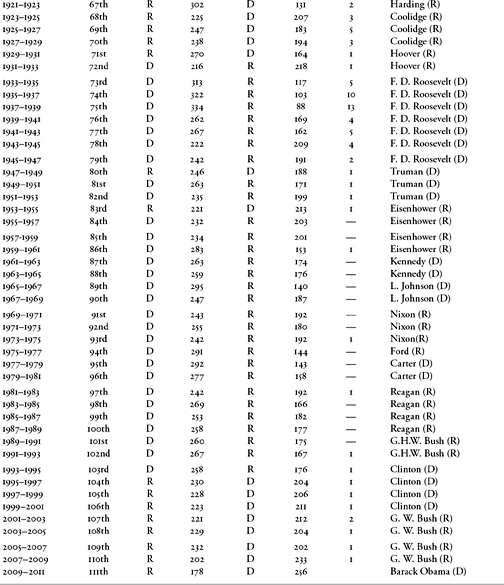
Note: Before the first day of the 72nd Congress, 19 Representatives-elect died. In 14 cases, party control of the seat changed with the special election, and the Democrats ended up with a majority of House seats, enabling them to organize the House.
Source: Congressional Research Service, Office of the Clerk, U.S. House of Representatives. Biographical Directory of the U.S. Congress.

American Wars: Service Members and Casualties
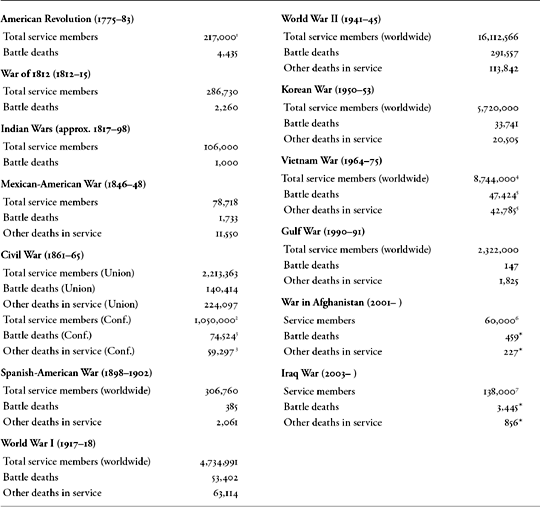
1. Exact number is unknown. Posted figure is the median of estimated range from 184,000 to 250,000.
2. Exact number is unknown. Posted figure is the median of estimated range from 600,000 to 1,500,000.
3. Battle death figures are based on incomplete returns. Other deaths in service figures do not include 26,000 to 31,000 who died in Union prisons.
4. Covers the period August 5, 1964–January 27, 1973 (date of cease-fire).
5. Covers period November 1, 1955 (commencement date for the Military Assistance Advisory Group)–May 15, 1975 (date last American service member left Southeast Asia, i.e., Vietnam).
6. Service members as of July 2009.
7. Service members as of January 2009.
*Casualties as of June 2009. Current casualty statistics are posted on the Department of Defense Web site http://www.defenselink.mil/news/casulty.pdf Information compiled from the Department of Veterans Affairs.